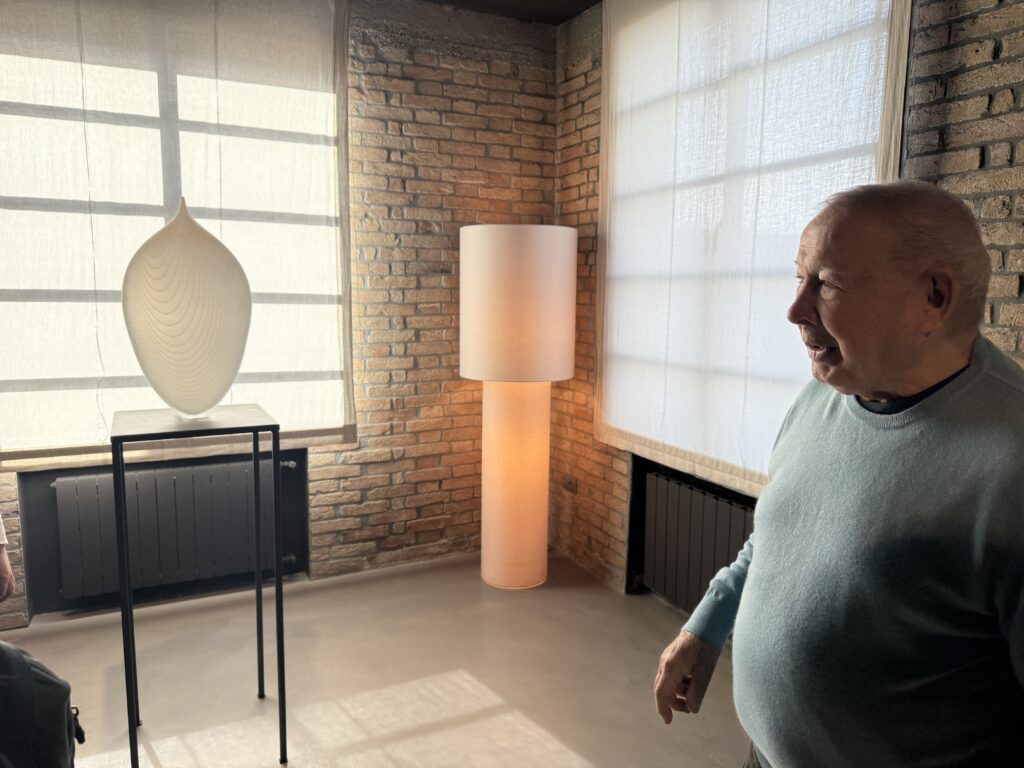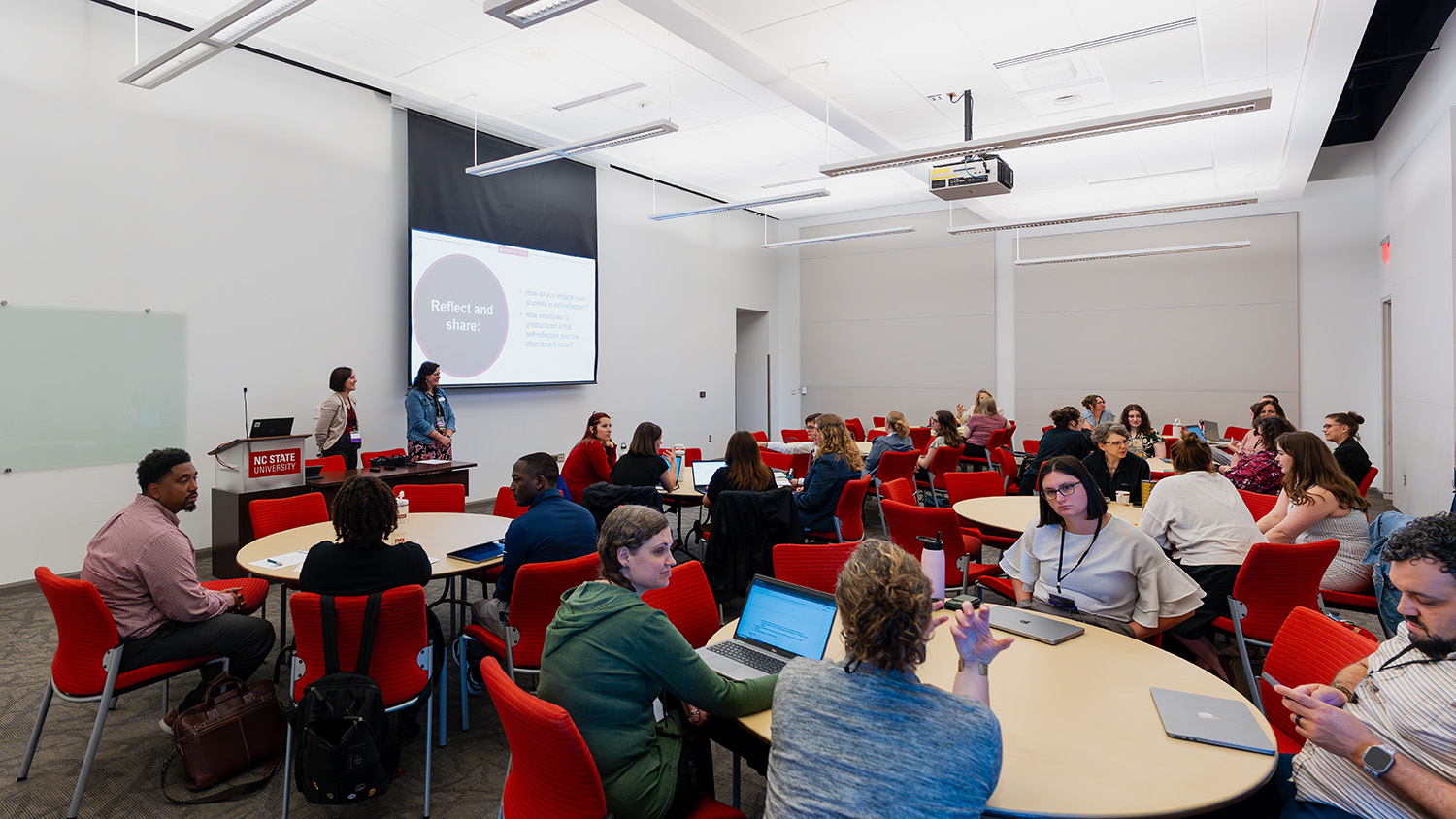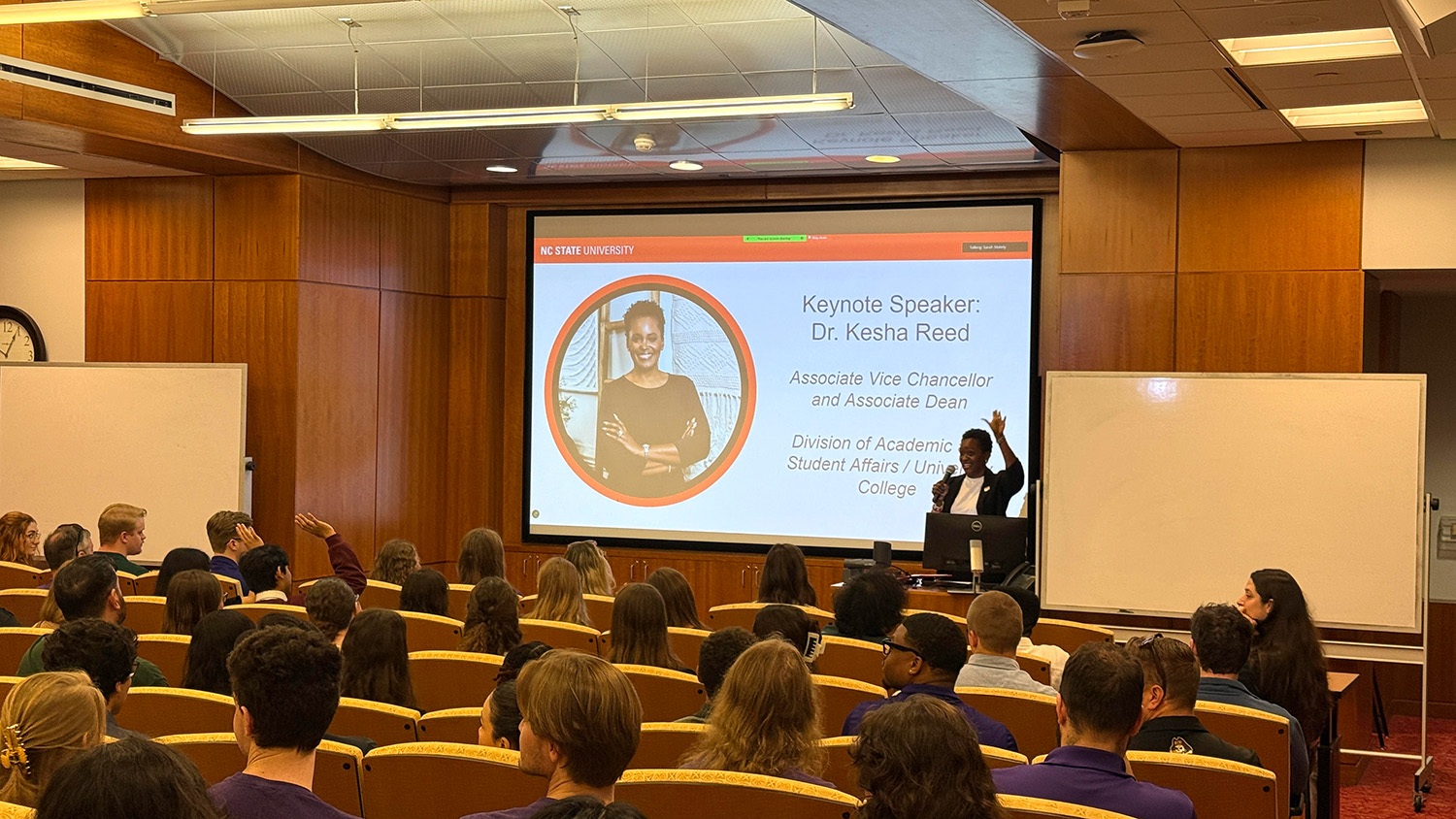World-Famous Glass Artist Instructs Honors Students Not to Fear Mistakes

When the participants of a short-term spring 2025 Study Abroad program traveled via vaporetto (an Italian public water bus) from Venice’s historic city center to the neighboring island of Murano to observe a glass-blowing demonstration, they had no idea they would be honored with the opportunity to meet one of the most beloved and renowned glass artists in the world.
“Italy: Urban History, Tourism, and Sustainability” is a combination three credit hour academic course plus spring break trip hosted by NC State Study Abroad and designed and instructed by Holly Hurlburt, professor of history and associate dean and executive director of academic enrichment programming for NC State’s University College.
For the duration of the spring 2025 semester, Hurlburt’s student participants are enrolled in History 343, “Topics in Urban History: Venice,” and are studying the history of Venice, Italy, “The Floating City,” its establishment as a tourist attraction from its earliest days and some of the more negative contemporary effects of over-tourism, as well as what the future of Venice and what its long history of art might look like due to climate change and sea level rise.
The class recently returned from the international experience part of the program — their spring break trip to Venice, where they were able to observe and learn more about the city they’ve been studying in the classroom.
Hurlburt put together a week’s worth of educational activities meant to supplement her course’s curriculum and provide the students with on-the-ground opportunities to investigate and interact with the city they’ve been discussing this semester, as well as the foci of their individual Venetian innovation term research projects.
For an educational student trip with themes in Venetian history, art and culture, a glass-blowing demonstration was an obvious choice for the group’s itinerary.
Hurlburt’s favorite local tour guide, Luisella Romeo, has made coveted connections across the city as a native Venetian, including legendary Italian glassblower, artist and teacher, Maestro Lino Tagliapietra.
Maestro is an Italian word meaning “master” or “teacher.” It is commonly used as a title of respect for highly skilled and respected artists. Lino Tagliapietra earned the honor of being referred to as “maestro” at the young age of 21.

Tagliapietra, who will turn 91 in August of this year, became an apprentice glassblower at the age of 11 on the Venetian island of Murano, the historically sequestered home of Venice’s famous glassblowing secret keepers. Eighty years in the glass business has yielded him a literal lifetime’s worth of works of art, recognition and awards, and life lessons.
Tagliapietra visited Seattle, WA in 1979, where he introduced students at the Pilchuck Glass School to the traditions of Venetian glassblowing, simultaneously forging a life-long friendship and collaborative working relationship with the equally beloved American glass artist Dale Chihuly, a founder of the school.
This cross-cultural collaboration helped shape the identity of American glassblowing and offered Tagliapietra an opportunity to expand his horizons internationally.
Art historian and curator Tina Oldknow may best summarize his influence in the field of glass artistry:
“Today, artists from around the world use a Venetian glass vocabulary to make work that would never, ever be produced in Venice, and the dissemination of this remarkably creative and vibrant craft language may be Lino’s most important legacy. Lino came to America to discover what there might be here for him and to teach others to work glass. In the process, he helped to pioneer an industry – not for commerce, but for art.”
The opportunity to mentor young glass artists early in his career has left Tagliapietra with a lasting love of teaching and a natural gravitation toward the enthusiasm and creativity that often surrounds young people. While the Venetian Study Abroad program instructors, Hurlburt and UHP Assistant Director Meghan Teten, knew tour guide Romeo was taking their group to Lino Tagliapietra’s showroom and workshop for a glassblowing demonstration, they were positively floored when the Maestro himself showed up to greet the students.
“He can’t help himself,” whispered Tagliapietra’s son, Silvano, to Hurlburt and Teten. “When he heard a group of college students would be visiting the shop today he told me he wanted to be there to talk with them.”
The opportunity to meet Tagliapietra will be an unforgettable experience for many of the trip participants. Getting to hear the stories and inspiration behind most of the pieces in the showroom, shared by the artist himself, is a powerful reminder of how art, craftsmanship and passion can leave a lasting impact.
Ryn Flood, a fourth-year student studying environmental sciences, shared that “hearing how he broke some of his own art during the pandemic, turning them into stained glass mosaics and other blown-glass pieces, was inspiring. It showed how creativity can thrive even in difficult times. In class, we focus on innovation in Venice, and Lino is a perfect example of the innovators who have shaped the city. His dedication to his craft is clear, and hearing his son say that his father never worked a day in his life because he loves what he does is inspirational.”
Silvano Tagliapietra, Lino’s son and manager of the Murano showroom, may only grudgingly agree with Flood on that point.
Silvano conspiratorially shared the story about how his father nearly gave them all heart attacks during that time in the pandemic, having secretly taken up to 15 of his finished pieces out of storage, all valued at around 50,000 euros (~$54,000 USD) each, and broke them up to experiment with in the workshop. At a time when the whole world was anxious, isolated and, for many, bored out of their minds, can anyone really blame the Maestro for wanting to try something new?
“I think it’s incredible how humble Lino is,” said honors student Luna Shaffer, a fourth-year student studying sustainable materials and technology. “Silvano told us that since his father can no longer comfortably climb the stairs to the second floor of the showroom that he was able to put a shelf of accomplishments up there for visitors to see, because Lino does not like to boast about his achievements. I think it’s incredible that someone so passionate, dedicated and who has lived such an amazing life can be so humble. I read a framed letter from a former student or friend while we were up there, and it was very moving to me. He seems like a great mentor, and while I’ve always been looking for a great mentor myself, seeing that letter made me want to be a mentor for someone else and have that profound of an impact.”
Makenna Phelps is a second-year international studies major with a concentration in Global Sustainability and Development. For her term project on Venetian innovation she has chosen to research glass blowing.
“The visit allowed me to personally connect with the topic of glass making on a whole different level,” Phelps said. “The experience showed me that Murano glass isn’t completely about preserving traditions, but also about pushing new boundaries, which was evident in the art that Lino allowed us to see.”
Tagliapietra personally walked small groups of the students through the first floor showroom, sharing little anecdotes and facts about many of his pieces along the way. When he stopped at an elegant, not-quite opaque, white-colored piece, accented with textured lines throughout, he introduced the glasswork to the students as one he likes to refer to as, ‘How To Make A Mistake.’
He explained to the students that the piece in front of them came from what was originally a ‘mistake of technique’ that his curiosity helped him to explore and turn into a novel and extraordinary piece of art. Tagliapietra proceeded to kindly lecture the students about the importance of being brave when facing the potential for error, that sometimes new and wonderful discoveries can be made from the lessons learned after a mistake is made.
“I really connected to Lino’s description of the piece about making mistakes… I thought that was very powerful,” honors student Daisy Pace, a first year studying chemistry, reflects. “He also stated that he doesn’t mean to push any sort of artistic meaning onto his work all the time — he wants that to be left up to the viewer, because he mostly just focuses on technique. When I asked him where he draws his inspiration from and how it has changed over the years, he just pointed to his head and said ‘whatever I feel,’ and I loved that so much! Our conversation was very important to me because he epitomizes what it is to find a balance between technique and artistic expression.”
As educators of high-achieving, perfectionism-prone students, Hurlburt and Teten may have appreciated the Maestro’s message most of all. Making mistakes can be crucial to the learning process, building resilience, and fostering a growth mindset, ultimately leading to personal and professional development. It is only by acknowledging, analyzing, and learning from mistakes that anyone can grow and improve. Hurlburt and Teten are therefore eternally grateful to Maestro Tagliapietra for sharing his perspective on the importance of embracing error with their students.
- Categories:


